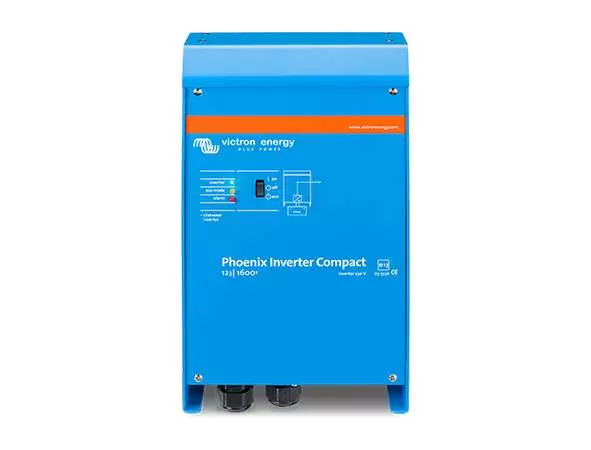Hybrid inverters are pivotal in contemporary energy systems, especially for users integrating renewable energy sources like solar power. These devices merge the functionalities of a conventional and solar battery inverter, enabling efficient electricity management from solar panels and batteries.
A Hybrid Inverterfacilitates a seamless transition between grid power, solar energy, and stored battery power, ensuring a consistent energy supply. This advanced technology supports energy independence and can significantly reduce reliance on traditional power sources. Hybrid inverters’ versatility makes them an excellent choice for both residential and commercial applications, offering an integrated solution for diverse energy needs.
Evaluating Your Power Requirements for a 5000 W Hybrid Inverter
Before selecting a hybrid inverter, assess household or business energy needs. Consider peak power demands, typical usage patterns, and the types of appliances in use. Factor in potential future energy consumption increases due to the addition of new devices or expansion plans.
A 5000W inverter is suitable for moderate power needs, but it is essential to ensure that this capacity aligns with long-term energy strategies. Evaluating power requirements involves calculating the total wattage of all appliances, considering both continuous and peak usage, to avoid overloading the system. Additionally, understanding the energy output of installed solar panels and the storage capacity of batteries is crucial for optimal performance.
Preparing the Installation Location for a 5000W Hybrid Inverter
Choose a dry, calm, and well-ventilated spot for installation. Ensure the area is accessible for maintenance while remaining secure from unauthorised access. Adhere to relevant safety standards, maintaining adequate clearance from flammable materials. Verify that the structural support is sufficient to hold the inverter’s weight.
Check for nearby electrical outlets and the proximity to the main electrical panel to minimise wiring distances. Ensure the location is free from direct sunlight and extreme temperatures, which can affect the 5000w Hybrid Inverter performance. If installing outdoors, ensure the area is protected from rain and other environmental factors, possibly requiring a protective enclosure.
Selecting the Appropriate 5000 Watt Hybrid Inverter
Opt for a 5000 Watt Hybrid Inverterwith high-efficiency ratings, a robust warranty period, and compatibility with solar panels and batteries. Examine various models and brands by consulting reviews and seeking expert advice to identify a dependable and efficient inverter. Consider additional features like remote monitoring capabilities and user-friendly interfaces to enhance overall system management. Ensure that the chosen inverter meets local regulatory standards and is backed by strong customer support from the manufacturer.
Collecting Required Tools and Equipment for a Sungrow Hybrid Inverter
Before starting the installation, ensure all necessary tools and equipment are available. Essential tools include screwdrivers, a drill, mounting brackets, a multimeter, and appropriate wiring. Additional materials like cable ties and conduits may be needed for a tidy and secure setup. Double-check the compatibility of all components with the specific Sungrow hybrid inverter model being installed. Keep the user manual nearby for reference to particular requirements and recommended tools. Proper preparation will streamline the installation process and help avoid unnecessary delays.
Safety Measures to Consider Before Installing a Hybrid Inverter
Safety should be a top priority when installing a hybrid inverter to ensure the system operates efficiently and securely. Below are five essential safety measures to consider:
Verify Electrical Compatibility
Ensure the hybrid inverter is compatible with your electrical system, including voltage and phase requirements. Mismatched components can lead to system failure or even electrical hazards. Check the manufacturer’s specifications and consult with a professional if needed.
Inspect the Installation Area
Choose a dry, well-ventilated location away from flammable materials. The area should have adequate space for heat dissipation to prevent overheating. Avoid areas prone to water exposure or extreme weather conditions.
Follow Wiring Guidelines
Proper wiring is critical for the safe operation of the hybrid inverter. Use high-quality cables with the correct gauge to handle the expected current. Ensure all connections are secure and insulated to prevent short circuits or electric shocks.
Install Proper Circuit Protection
Integrate circuit breakers, fuses, or surge protectors into the system to safeguard against electrical overloads and power surges. These devices help protect both the inverter and connected appliances from potential damage.
Engage a Qualified Installer
Hybrid inverter installation requires technical expertise. Hire a licensed professional with experience in renewable energy systems to ensure the installation complies with local electrical codes and safety standards.
Installing the Hybrid Inverter
Mount the hybrid inverter securely to a wall or other support structure using brackets and hardware. Ensure the inverter is level and stable to prevent any vibrations or movements. Connect the inverter to the main electrical panel, following the manufacturer’s instructions meticulously. Use the correct wire gauge and connectors to ensure a safe and efficient connection.
Double-check all electrical connections to confirm they are tight and correctly positioned. As the manufacturer recommends, integrate any additional components, such as fuses or disconnect switches. Once all connections are made, inspect the setup thoroughly for any potential issues before proceeding to the next steps.
Configuring the Settings of a Hybrid Inverter 5000w
Access the Hybrid Inverter 5000w control panel to begin configuration. Set the current date and time accurately; this information is crucial for logging energy data and performance metrics. Adjust operational modes according to energy management needs, such as selecting between grid-tied and battery backup modes.
Customise additional settings, such as battery charge and discharge parameters, to optimise energy efficiency. Some hybrid inverters also allow the integration of demand response settings, which can be adjusted for better energy consumption during peak times. Always refer to the manufacturer’s manual for specific instructions and recommended settings.
Connecting Solar Panels and Batteries to a 5000W Hybrid Inverter
Ensure the solar panels are connected to the hybrid inverter using appropriate connectors, following the manufacturer’s guidelines for correct polarity. Next, integrate the batteries by wiring them to the inverter, adhering to the specified voltage and capacity requirements. Use appropriately rated cables to avoid energy losses and maintain safety.
Secure all connections firmly to prevent any loose wires, which could lead to performance issues or hazards. Considering current and future demands, verify that the battery bank is appropriately sized to meet energy storage needs. Double-check all wiring and connections against the manufacturer’s instructions before powering on the system for optimal performance.
Testing the Sungrow Hybrid Inverter
Power on the hybrid inverter and wait for it to initialise. Observe the display panel for any error messages or warnings. Verify that the system detects all connected components, such as solar panels and batteries. Check the output readings to ensure the inverter is converting energy efficiently. Test the inverter’s response by simulating different scenarios, such as switching between grid power and battery backup.
Use the monitoring tools the manufacturer provides to track performance metrics in real-time. Ensure all settings, including charge and discharge rates, align with the intended configuration. If issues arise, consult the user manual or contact customer support.
Monitoring Energy Consumption with a Hybrid Inverter Sungrow
Utilise the monitoring features of the Hybrid Inverter Sungrowto track energy production and consumption. Many models offer mobile applications or web portals that provide real-time access to data, enabling the user to monitor performance metrics efficiently.
Adjust energy use patterns based on insights gained from these tools, identifying areas for potential energy savings and efficiency improvements. Regularly reviewing this data can help detect any anomalies or performance issues early, allowing for prompt action to be taken. Utilising these monitoring capabilities not only ensures optimal system performance but also aids in maintaining long-term energy efficiency.
Maintenance Guidelines for a 5000W Hybrid Inverter
Regularly check the inverter and related components for any signs of wear or damage. Ensure the device remains clean and dust-free, following the manufacturer’s maintenance guidelines. Inspect electrical connections periodically to confirm they remain secure and free from corrosion. Verify that cooling fans and ventilation openings are unobstructed to prevent overheating.
Keep the software and firmware updated to benefit from the latest features and improvements. Listen for any unusual noises, which may indicate a need for professional inspection. Adhering to a regular maintenance schedule can prevent minor issues from developing into significant problems. Consult the user manual for specific maintenance tasks and intervals to ensure compliance with the manufacturer’s recommendations.
Conclusion
Setting up a hybrid inverter requires careful planning and execution to ensure optimal performance. Key stages include evaluating power needs, selecting the appropriate model, and following safety measures during installation. Proper configuration of system settings and thorough testing are essential to confirm efficient operation. Regular maintenance and monitoring further enhance system reliability and longevity. By leveraging these steps, users can effectively harness renewable energy sources, contributing to sustainable energy practices and reducing reliance on traditional power grids. Hybrid inverters offer a versatile and integrated solution, making them valuable to residential and commercial energy systems.
FAQs
What is a hybrid inverter?
A hybrid inverter combines the functionalities of a standard inverter with those of a battery inverter, managing both solar energy and battery storage.
How long does it take to install a hybrid inverter?
Installation typically ranges from a few hours to a full day, depending on system complexity and installer expertise.
Can a hybrid inverter work without batteries?
Yes, but incorporating batteries enables enhanced energy storage and backup capabilities.
Are hybrid inverters suitable for commercial use?
Yes, hybrid inverters are versatile and can be used in residential and commercial settings.
What is the lifespan of a hybrid inverter?
Hybrid inverters generally last 10-15 years, depending on usage and maintenance.
Can hybrid inverters reduce electricity bills?
Yes, by optimising solar energy usage and reducing reliance on the grid. What maintenance is required for hybrid inverters? Regular inspections and cleaning, as well as software updates, are essential for optimal performance.
| Related Business Listings |
| Contact Directory |
| Local Business Profiles |




